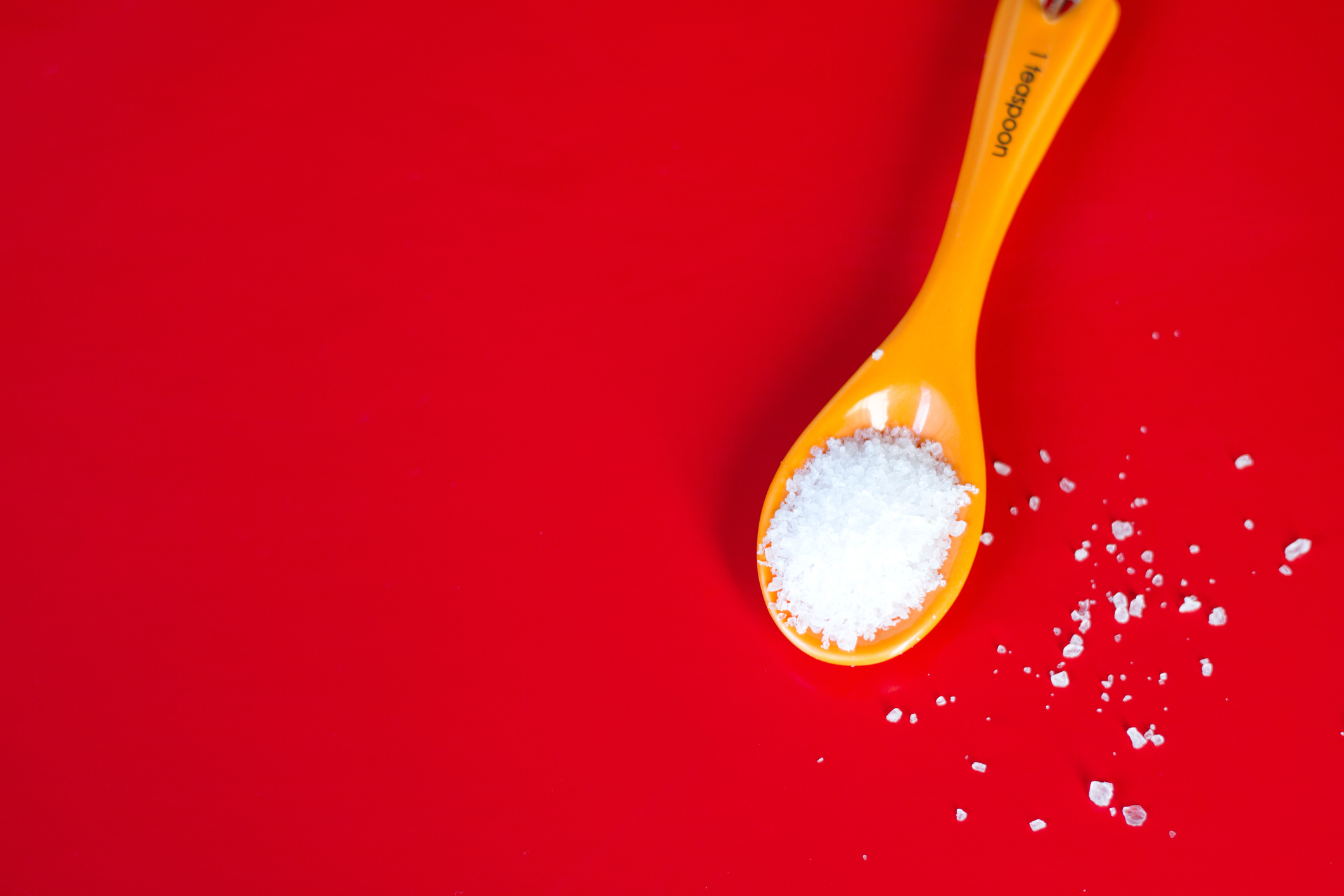

High blood pressure, or hypertension, affects more than 1 billion people and is the top risk factor for mortality worldwide, accounting for half of all heart disease and stroke-related deaths. Yet fewer than 1 in 5 of these people have their blood pressure under control.
Hypertension puts added pressure on your arteries, which affects the heart’s ability to pump blood effectively. This can lead to cardiovascular, brain and kidney diseases, sometimes before you’re even aware your blood pressure is high enough to cause these problems.
Once hypertension has been diagnosed, management of the condition usually involves a combination of lifestyle modifications and medication. But U.S.-based researchers are finding that lowering blood pressure could be as simple as making this one lifestyle tweak….
Could subtracting just one teaspoon do it?
Researchers randomized individuals in their 50s to 70s to either a high-sodium diet or low-sodium diet for one week, after which they switched to the opposite diet for one week.
The high-sodium diet included 2,200 mg per day on top of the participants’ usual diet, while the low-sodium diet included 500 mg in total per day. This amounts to a reduction in salt intake of about one teaspoon a day.
The results were remarkable. Systolic blood pressure was lowered by 7 to 8 mm Hg when participants consumed the low-sodium diet compared with the high-sodium diet, and by 6 mm Hg compared with their usual diet. Overall, 72 percent of participants showed a lowering of their systolic blood pressure on the low-sodium diet compared with their usual diet.
The 6 mm Hg decline in blood pressure is comparable to the effect of a commonly prescribed blood pressure medication, says Dr. Deepak Gupta, a professor at Vanderbilt University Medical Center and co-principal investigator.
What this means is that losing one teaspoon of salt a day could have the same effect as taking a medication to lower blood pressure.
“We found that 70 to 75 percent of all people, regardless of whether they are already on blood pressure medications or not, are likely to see a reduction in their blood pressure if they lower the sodium in their diet,” says co-principal investigator Norrina Allen, a professor at Northwestern University Feinberg School of Medicine.
What makes these results even more astounding is that they were achieved safely and swiftly in one week.
“The fact that blood pressure dropped so significantly in just one week and was well tolerated is important and emphasizes the potential public health impact of dietary sodium reduction in the population, given that high blood pressure is such a huge health issue worldwide,” says co-investigator Dr. Cora Lewis, a professor at the University of Alabama at Birmingham.
Even people on medication saw results
This study is one of the largest to explore the effect of reducing sodium in the diet on blood pressure including people with hypertension who are already taking medication for the condition.
“The effect of reduction in dietary sodium on blood pressure lowering was consistent across nearly all individuals, including those with normal blood pressure, high blood pressure, treated blood pressure and untreated blood pressure,” Gupta says.
“We previously didn’t know if people already on blood pressure medication could actually lower their blood pressure more by reducing their sodium,” Allen says.
The study was designed to reduce total daily sodium intake below the American Heart Association’s recommended level of 1,500 mg. “It can be challenging but reducing your sodium in any amount will be beneficial,” Allen says.
“Just as any physical activity is better than none for most people, any sodium reduction from the current usual diet is likely better than none for most people with regards to blood pressure,” Gupta says.
Managing blood pressure naturally
Of course, it’s no surprise that a diet lower in salt wouldn’t have benefits. There’s much evidence that a healthy lifestyle, of which diet and exercise are important elements, is the most important influencer of blood pressure.
Now, depending on who you ask, there are differences in daily recommendations for salt intake…
The AHA’s recommendation is a 1,500 mg threshold, the FDA Dietary Guidelines for Americans is less than 2,300 mg and the World Health Organization suggests less than 2,000 mg.
If you’re not sure which to follow and a doctor treats you for hypertension, ask his advice.
As for additional means of lowering blood pressure naturally, use your spice rack, superfoods and this tasty homemade soup known for taking those numbers down.
As far as what to avoid, some of the worst sources of excess salt or sodium are processed foods. WebMD says to avoid these especially:
Canned soup —The average can of soup has 410 mg of sodium but can go as high as 1,880 per serving.
Cottage cheese — Read the label. This otherwise healthy food, depending on brand, may range from 300mg to 900 mg per cup.
Frozen foods — A single slice of frozen pizza can hold 700 mg or more. Frozen dinners are high also.
Sauces and condiments — Soy sauce contains up to 1,000 milligrams per tablespoon, while barbecue sauce averages 450 milligrams.
Sources:
Cut salt, cut blood pressure — ScienceDaily
Effect of Dietary Sodium on Blood Pressure — JAMA
Hypertension — World Heart Federation


